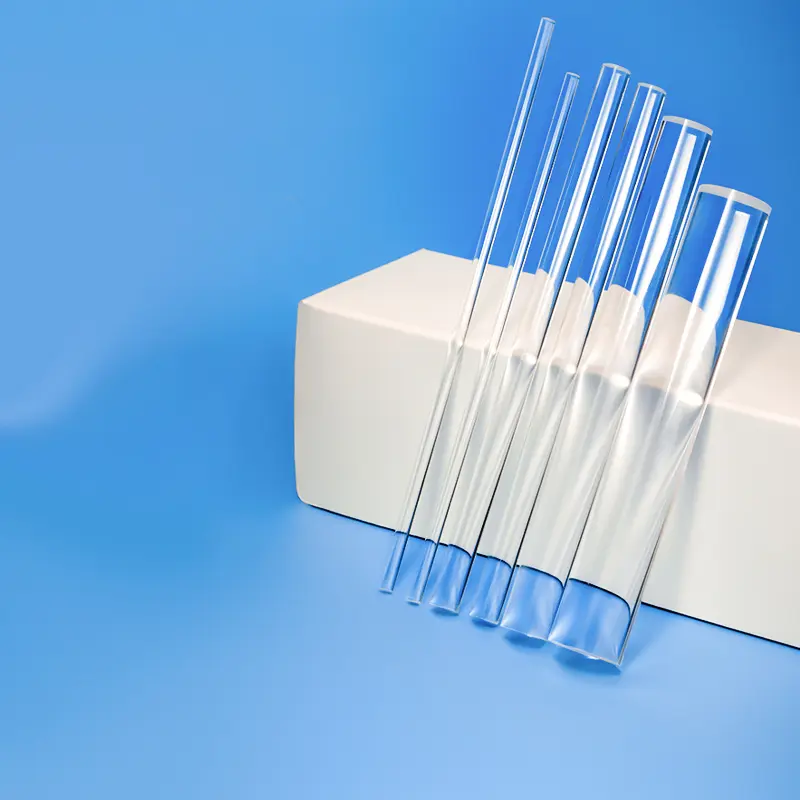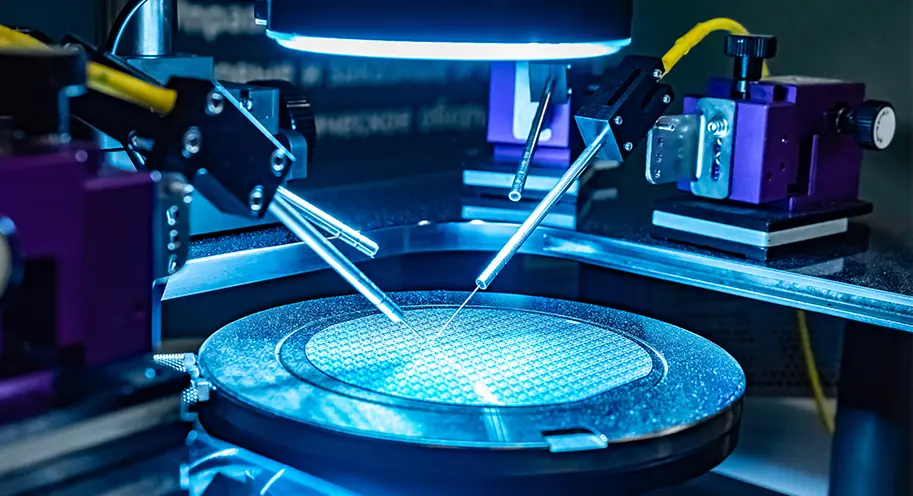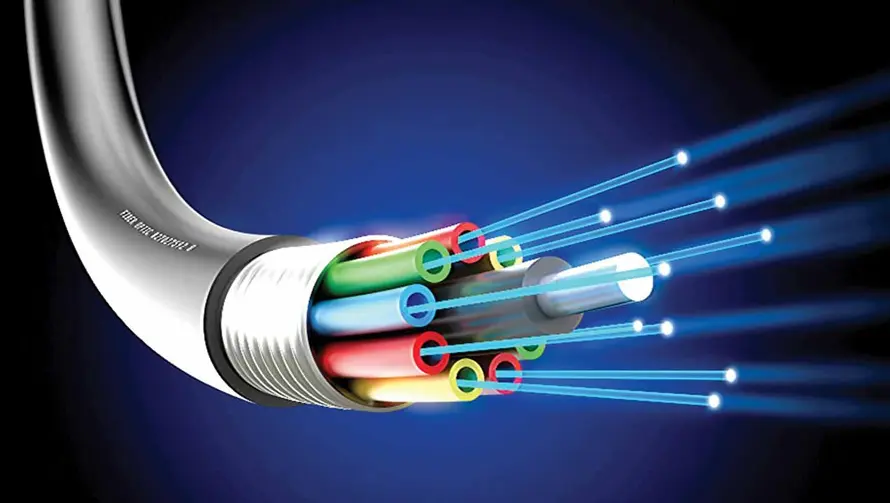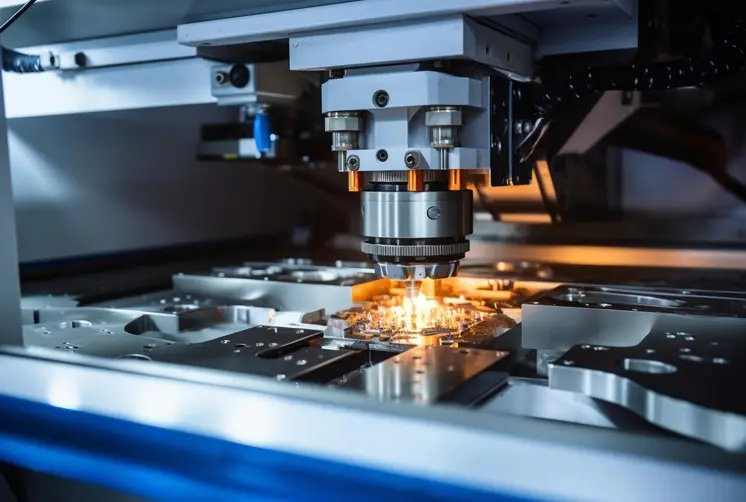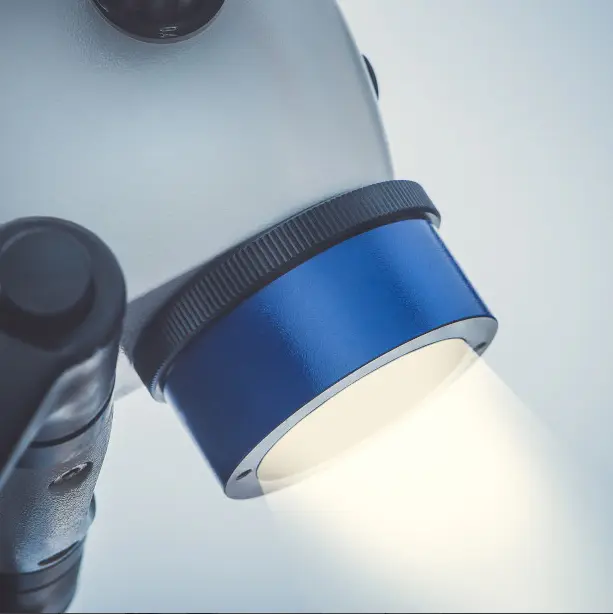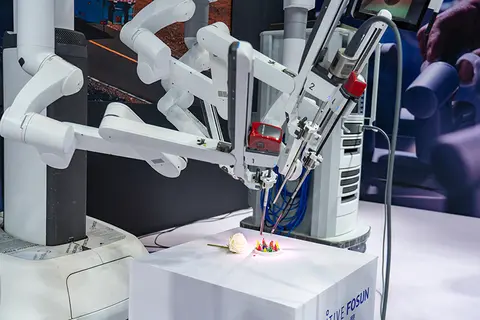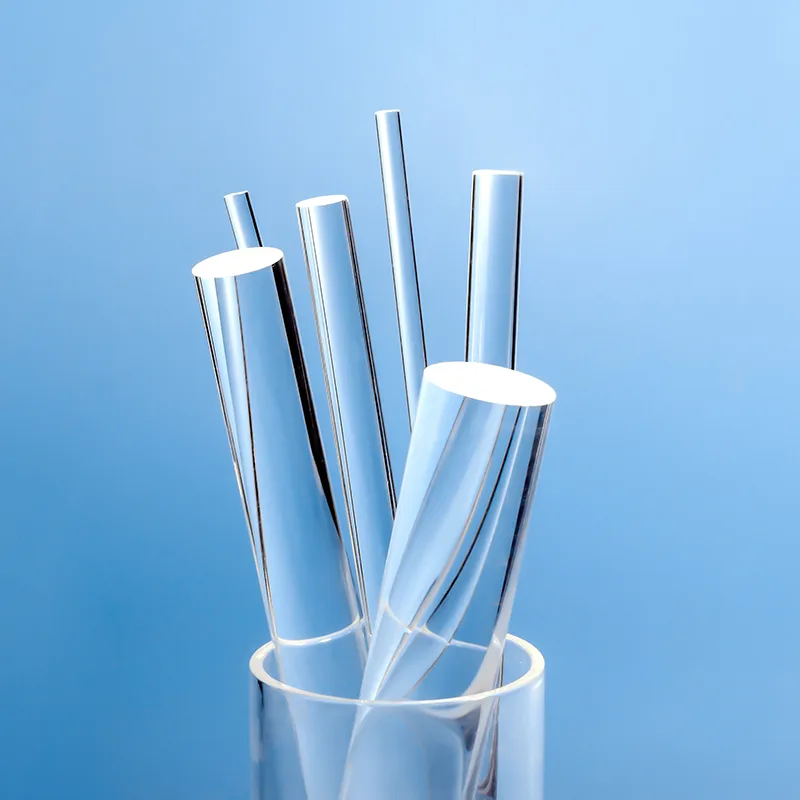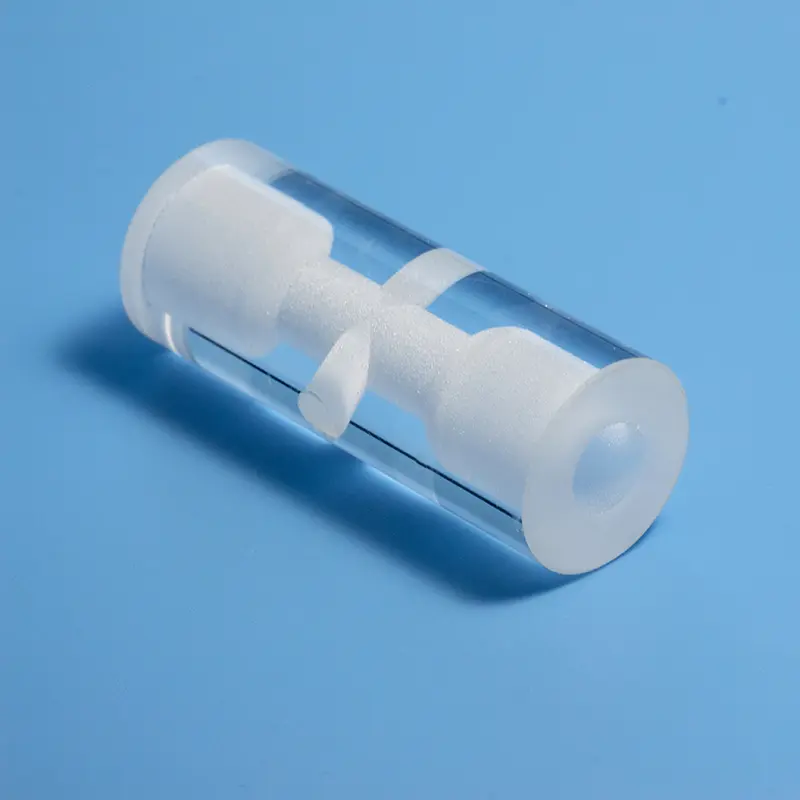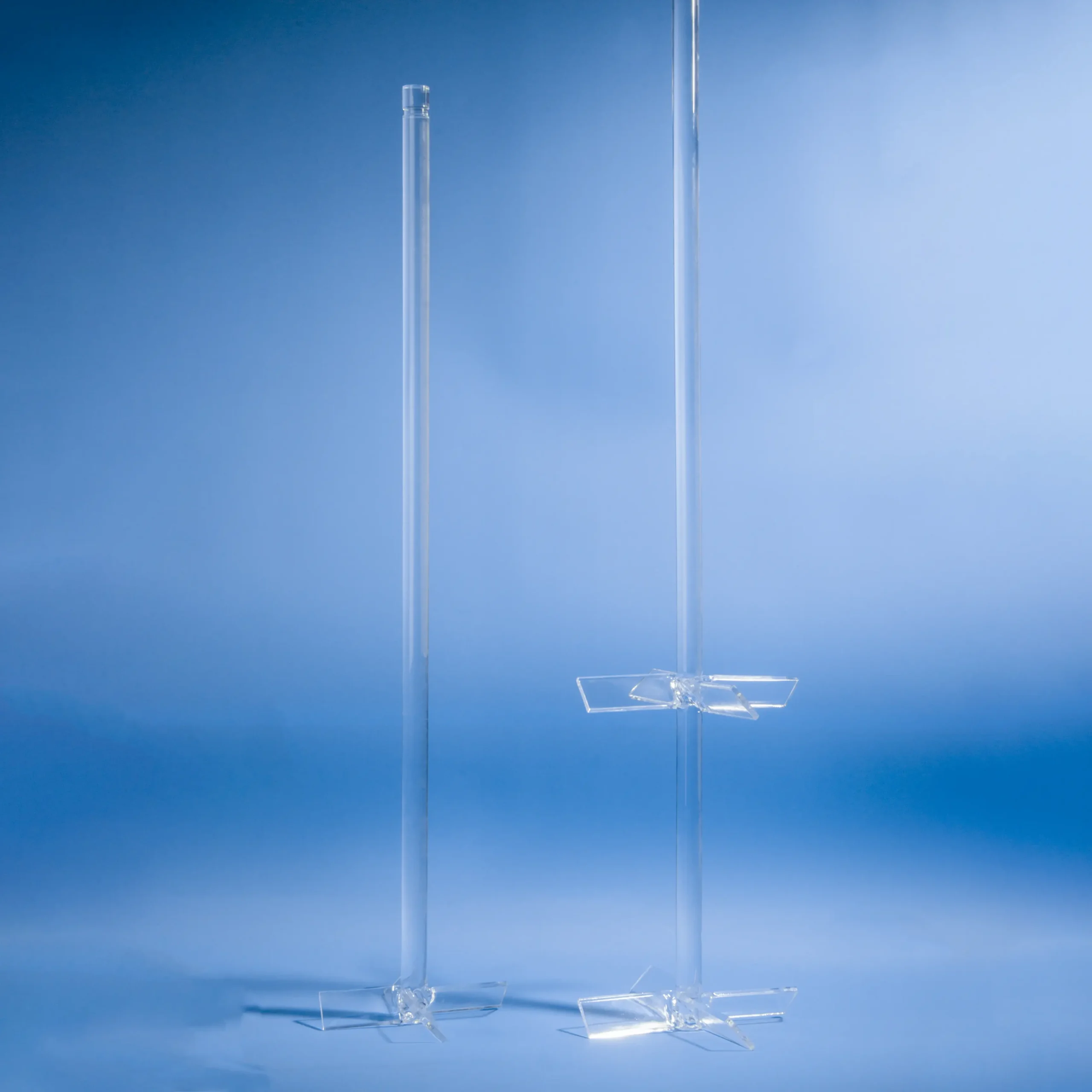Quartz rods are rod-shaped materials primarily made from quartz sand, characterized by high purity, high-temperature resistance, and corrosion resistance.
| diameter | length |
|---|---|
| 10mm | 300mm |
| 10mm | 600mm |
| 12mm | 300mm |
| 12mm | 600mm |
| 14mm | 300mm |
| 14mm | 600mm |
| 15mm | 300mm |
| 15mm | 600mm |
| 15mm | 1000mm |
| 16mm | 300mm |
| 16mm | 600mm |
| 16mm | 1000mm |
| 16mm | 1200mm |
| 18mm | 300mm |
| 18mm | 600mm |
| 18mm | 1000mm |
| 18mm | 1200mm |
| 20mm | 300mm |
| 20mm | 600mm |
| 20mm | 1000mm |
| 20mm | 1200mm |
| 22mm | 300mm |
| 22mm | 600mm |
| 22mm | 1000mm |
| 22mm | 1200mm |
| 25mm | 300mm |
| 25mm | 600mm |
| 25mm | 1000mm |
| 25mm | 1200mm |
| 28mm | 300mm |
| 28mm | 600mm |
| 28mm | 1000mm |
| 28mm | 1200mm |
| 30mm | 300mm |
| 30mm | 600mm |
| 30mm | 1000mm |
| 30mm | 1200mm |
| 32mm | 300mm |
| 32mm | 600mm |
| 32mm | 1000mm |
| 32mm | 1200mm |
| 35mm | 300mm |
| 35mm | 600mm |
| 35mm | 1000mm |
| 35mm | 1200mm |
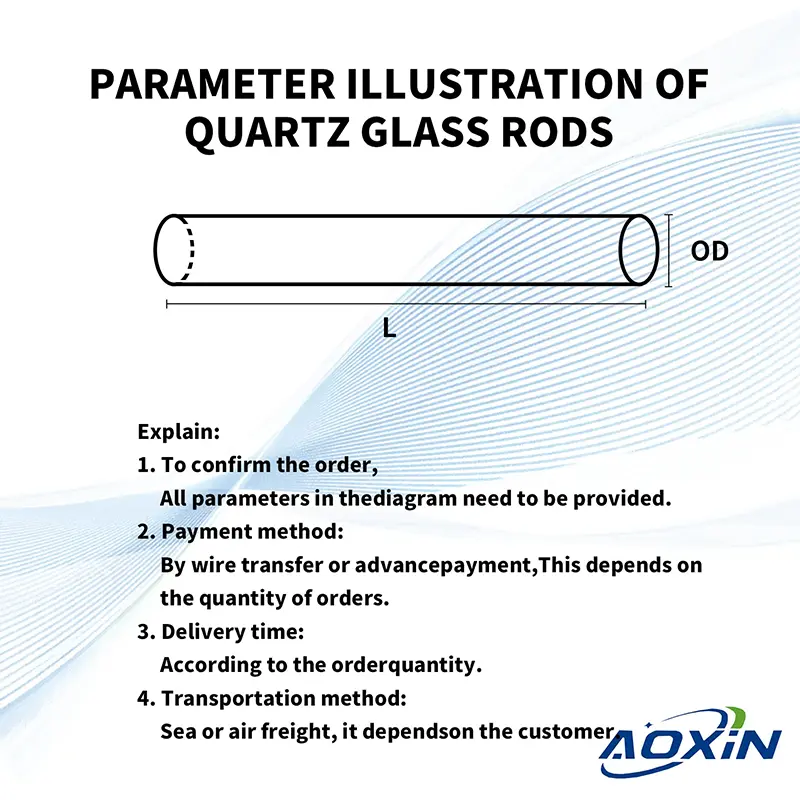
- Payment method:
By T/T or prepayment,
It depends on the quantity of the order. - Delivery time:
According to the order quantity. - Shipping method:
By sea or by air,
It depends on the customer.
Remarks:
To confirm the order,
the following parameters are required:
① outer diameter ② length ③ quantity
Error: Contact form not found.
| Property Content | Property Values |
|---|---|
| SiO2 | 99.99% |
| Density | 2.2×10³ kg/cm³ |
| Hardness | 5.5 - 6.5 Mohs' Scale 570 KHN 100 |
| Tensile Strength | 4.8×10⁷ Pa (N/mm2) (7000 psi) |
| Compression Strength | >1.1×10⁹ Pa (160,000 psi) |
| Coefficient of Thermal Expansion | 5.5×10⁻⁷ cm/cm·°C (20°C-320°C) |
| Thermal Conductivity | 1.4 W/m·°C |
| Specific Heat | 670 J/kg·°C |
| Softening Point | 1730°C (3146°F) |
| Annealing Point | 1210°C (2210°F) |
| Strain Point | 1120°C (2048°F) |
| Work Temperature | 1200°C (2192°F) |
| Electrical Resistivity | 7×10⁷ ohm cm (350°C) |
| Size | Customized |
| Logo | Customized Logo Accept |
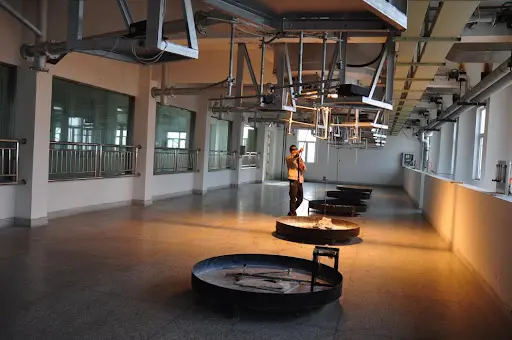
There are two primary methods for producing quartz rods: the continuous method and the flame fusion method (also known as the gas fusion method).
Continuous Method: In this method, quartz sand is fed from the top into a furnace, which comprises a metallic quartz crucible surrounded by electric heating elements. The quartz sand melts at high temperatures. The molten material then passes through a shaping orifice at the bottom of the crucible, producing rods, tubes, sheets, or other various specified product forms.
Flame Fusion Method: This method involves using hydrogen and oxygen to melt colorless quartz crystal. The molten material is formed into quartz glass through the melting and congealing of crystalline particles in the flame. The quartz glass is then removed from the flame through different methods and processed into quartz rods of the desired shape.
Superior Corrosion Resistance
Quartz rods are made from pure natural quartz stone, which provides exceptional resistance to corrosion, enabling long-term use in harsh environments such as acids and alkalis without being easily damaged.
High-Temperature Stability
The quartz composition of these rods provides excellent resistance to high temperatures, allowing them to withstand hot water, steam, and similar conditions without deformation or embrittlement.
Smooth and Flat Surface
Through precise processing, the quartz rod surfaces are smooth and flat, making them less prone to accumulating dirt, and thus are easy to clean and maintain.
igh Hardness and Compressive Strength
Quartz rods are resistant to external impacts and wear, resulting in a long service life.
Application Scenario
Semiconductor Manufacturing
Quartz rods are used in the semiconductor industry for manufacturing wafer processing equipment, photolithography equipment, and other semiconductor process tools. Their ability to withstand high temperatures and chemical corrosion is critical in semiconductor manufacturing processes.
The manufacturing process of quartz rods primarily involves melting quartz sand into hollow quartz preforms using a plasma flame. These preforms are then mechanically cold-worked into thick-walled quartz tubes. Finally, a medium-frequency induction heating non-contact secondary shaping technology is used to produce the quartz rods. This meticulous process ensures the quartz rods possess high purity, low hydroxyl content, high dimensional accuracy, and a superior surface finish free of defects.
In the electronics industry, quartz rods are primarily utilized as substrates for semiconductor materials and as bases for electronic components. Their excellent electrical insulation and thermal stability make them ideal for use in high-frequency circuits and sensors, as well as other high-precision electronic devices. Quartz rods are also crucial for the production of photomasks and glass chips, which are vital for enhancing electronic device performance.
Quartz rods exhibit an extremely low coefficient of thermal expansion and excellent resistance to thermal shock.
Frequently asked questions
Quartz glass is a hard and brittle material with excellent physical and chemical properties, extremely high mechanical hardness, good electrical insulation, high temperature and corrosion resistance, low and stable delay performance, good light transmittance, etc. It is widely used in semiconductors, optics, electricity, chemistry, aerospace, automobiles and other fields. Hard and brittle materials are difficult to process, and many fields urgently need cutting processes with small edge collapse, less material loss, low cross-section roughness, and a wide cutting thickness range. The traditional cutting method of quartz glass is mechanical cutting, that is, wheel cutting. Non-traditional cutting methods include water jet cutting, electrochemical discharge wire cutting, continuous laser cutting, etc. Mechanical cutting has low cost, but the contact between the wheel and the material causes large tool wear, and the material is easily contaminated by the tool. Quartz glass is prone to edge collapse, microcracks, and residual stress, which affects the strength and performance of the material! It is difficult to achieve curve cutting and requires post-processing, such as grinding and polishing. Laser cutting does not directly contact the material, has no contact stress, and can perform complex curve cutting. Picosecond laser has the advantages of small spot diameter, high precision, short action time with the material, and small action area, and is suitable for the processing of hard and brittle materials.
。

